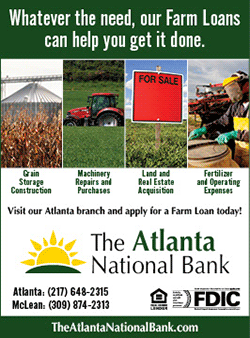Analysis-Higher U.S. food benefits give legs to dollar stores' fresh
food push
 Send a link to a friend
Send a link to a friend
 [August 25, 2021] By
Richa Naidu and Aishwarya Venugopal [August 25, 2021] By
Richa Naidu and Aishwarya Venugopal
CHICAGO (Reuters) - U.S. dollar stores
including Dollar General and Family Dollar are likely to see a sales and
earnings boost from the Biden administration's plan to hike food stamp
benefits, an added payoff for the chains' strategy to tap the $274
billion fresh food market.
The U.S. Department of Agriculture (USDA) said last week that as part of
a plan to promote a more nutritious diet among Americans, it is raising
average Supplemental Nutrition Assistance Program (SNAP) benefits by
more than 25% versus pre-pandemic levels.
In a $1 trillion food-at-home industry, the additional payout is
expected to potentially add about $6 billion of increased funding to
shoppers' wallets starting in October, analysts at Evercore said.

Under the new rules, average monthly benefits, $121 per person before
the pandemic, will rise by $36. All 42 million people in the program
will receive additional aid.
With the additional $36, "you would expect they would buy more things
like meat, fish, fruits and vegetables because those are high-priced
items that tend to be responsive to income changes," said Joe Glauber,
former USDA chief economist and a senior research fellow at the
International Food Policy Research Institute.
Dollar stores count on low-income shoppers, and welfare checks tend to
drive sales. In the pandemic, sales have skyrocketed with the help of
shoppers benefiting from stimulus money, food stamps, child tax credits
and higher wages in a tight labor market.
A Dollar General store in Norridge, Chicago sells 30-cent bunches of
bananas and charges 75 cents for a lemon. This compares to a single
banana that costs 27 cents at a Kroger-owned Mariano's store in a
similar neighborhood in Chicago, where lemons cost 89 cents each.
A GREAT POSITION
"They (dollar stores) are going to have a tremendous benefit from this
step-up in government support," said Mark Cohen, the director of retail
studies at Columbia Business School and former chief executive of Sears
Canada. "It plays perfectly into the hands of their existing customer
base, who now will have more money to spend."
[to top of second column] |

Packs of coffee are seen at a Dollar General store in Norridge,
Chicago, U.S., August 24, 2021. Picture taken August 24, 2021.
REUTERS/Richa Naidu

Dollar stores run thousands of outlets that are walking distance from shoppers
who use government assistance to buy food.
"We do well when she (the customer) has a little extra money to spend ... Now if
things start to more normalize and/or go the other way, then we're in a great
position as well because she needs us even more," Dollar General Chief Executive
Officer Todd Vasos said at an industry conference in June.
In securities filings, the company flags the importance of SNAP to its earnings.
Both Dollar General and Dollar Tree, which declined to comment, will report
earnings on Thursday.
If SNAP recipients have more to spend, they're more likely to buy more expensive
food at dollar stores like fresh items that require refrigeration, Scott Vinson,
the National Retail Federation's vice president for government relations, food
and energy policy, said.
Still, not everyone trusts dollar stores for fresh produce, especially with big
retailers such as Walmart and Target bolstering their offerings.
"I just don't like the quality of it...I feel produce would be better at other
places so I never really looked here, to be honest with you," said Laura, 56, an
accountant from Harwood Heights, Chicago who was loading up her cart with
packaged food at the Norridge store.

(Reporting by Richa Naidu and Aishwarya Venugopal; Editing by Andrea Ricci)
[© 2021 Thomson Reuters. All rights
reserved.] Copyright 2021 Reuters. All rights reserved. This material may not be published,
broadcast, rewritten or redistributed.
Thompson Reuters is solely responsible for this content. |